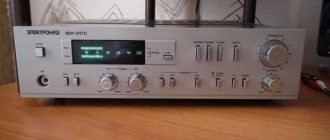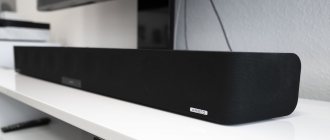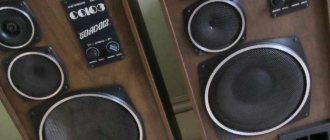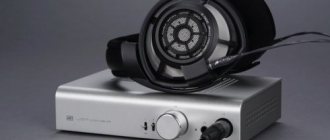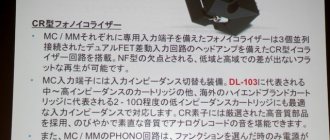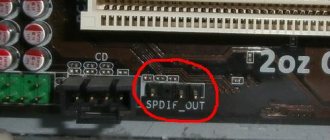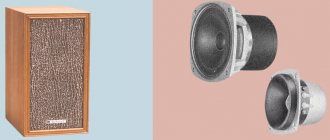Time has not been kind to high-end multi-channel music systems. Few people invest in serious surround sound systems these days. There are also very few companies left that professionally deal with multi-channel music recordings. The once promising DVD-A and SACD formats are all but forgotten: DVD-A discs are effectively dead, and Sony, which originally promoted SACD, is no longer doing it. As for streaming, everything is focused on MQA and Hi-Res, but not on multi-channel music.
If surround music exists today, it is mostly SACD from audiophile American companies like Reference Recordings. In Europe there are also labels that support the SACD format, which Sony abandoned. By the way, these companies have recently begun experimenting with new multi-channel recording methods. If we talk about Blu-ray and PCM, then only the American company AIX Records is more or less active.
The current state of affairs has led to the fact that surround sound systems are in most cases systems for video content. In this sense, a new alternative movement has already emerged, supported by high-end videophiles. The serious videophile these days is preoccupied with height channels (in addition to center, subwoofer, front, rear and side channels). I'm talking about 9.1 and 11.1 channel systems.
And it’s not only movie lovers who assemble separate specialized DC systems - some audiophiles also have such “additional” AV setups. However, it is rare to find those who listen to music on them. There are even fewer who spare no expense on audio components for their recreation centers. And almost no one spends as much on multichannel audio equipment as they do on stereo.
Audiophiles use their "add-on systems" for music only because they invested in SACD and DVD-A a long time ago. Are there people who are concerned about creating surround systems with premium components exclusively for streaming/digital content? Of course, there are such things (by the way, a lot of surround music in Hi-Res is available on the website nativedsd.com).
This article will discuss the fact that becoming one of the multi-channel audiophiles would be quite interesting, but only if you already have a good AV system with surround sound. Such a system will allow obtaining quality acceptable for experiments.
So, we’ll take the existing multi-channel setup as the basis for the “additional system” for music, and we’ll use old SACDs from the collection as a source. At worst, these experiments will provide new knowledge; at best, you will gain an understanding of basic principles, which may come in handy when streaming and High End think about multi-channel music.
What do the numbers on the speaker channels mean?
First number (for example, "5" in 5.1)
The first number of the speaker configuration determines the number of main speakers in the installation. When we talk about main speakers, we're talking about front left, front right, center, and various surround speakers.
Second number (for example, "1" in 5.1)
The second number of the speaker configuration indicates the number of subwoofers in the surround sound setup. Most often you'll see 1, which means the setup has one subwoofer, but every now and then you might see 2. While most surround sound systems work great with just one subwoofer, some people prefer the sound of two for their unique room and needs.
Third number (for example, “2” in clause 7.1.2)
The third number of the speaker configuration indicates the number of "height" or "upward-firing" speakers.
As if two numbers weren't enough, you may come across numbers like 7.1.2 or 9.1.2 in your home theater search. While these numbers seem quite complex, they simply provide a way to determine the "height" of the speakers in a home theater surround sound system. Height-mounted speakers are usually located on the ceiling of a home theater room, but they can also be upward-firing speakers.
Stereo systems: 2.0 and 2.1 channel speaker systems
Stereo speaker system 2.0
In a 2.0 stereo system, you will have two speakers next to the TV - one on the left and one on the right. Your speakers will most likely be powered by a good receiver or even amplifier. In some cases, the speakers are active and do not require a separate power source. You won't have a subwoofer, and the speakers will be compatible with TV, DVD, and mobile devices like phones and laptops.
A 2.0 stereo system is a basic stereo system without surround sound that is typically used for listening to music. This is an affordable setup that can be the start of home theater and helps make life easier. This will give movies and TV programs better sound than the tiny speakers that come with TVs, so there's nothing wrong with this simple setup.
2.1 Speaker system
A 2.0 stereo sound system will give your home theater slightly better sound than a single two-speaker setup. You'll have left and right speakers on each side of the TV, and by adding one subwoofer you'll get extra bass and depth from your home theater sound system.
Since there are no surrounding speakers, this setup is still quite basic, but adding a subwoofer will definitely improve the sound to provide a more sophisticated experience. You'll hear the low frequencies better, and you'll enjoy a clutter-free home theater without a bunch of wires running everywhere.
Many sound bars have a 2.1 channel setup, and this setup is typically used for watching movies, TV, and music.
7.1 and 7.1.2 surround sound systems
7.1 surround sound system
A 7.1 surround sound system includes all the components of a 5.1-channel system and adds two more rear speakers. This is an eight-channel system that is commonly used in home theaters. In a 7.1 home theater surround sound system, adding two speakers in the rear gives an even fuller, rounded sound. This is because the two side surround speakers will not be responsible for either rear or surround sound.
Speaker placement is for the original six channels of a 5.1 surround sound system, but ideally the two rear speakers should be positioned at an angle of 135 to 150 degrees from the center channel/TV for optimal surround sound.
7.1.2 Surround sound system
Looking at the numbers, this setup may seem complicated, but a 7.1.2 surround sound system simply means installing 7.1 surround sound with the addition of two in-ceiling or upward-firing speakers. This setup is primarily created with Dolby Atmos in-ceiling speakers, and you can learn more about Dolby Atmos 7.1.2 speaker configuration and setup here.
This surround sound system is best used on a flat drywall or plaster ceiling and the ceiling height should not exceed 14 feet. This is a higher level home theater.
Although increasingly used in home theaters, this technology provides a premium, realistic and immersive home theater experience by creating a sound dome in your home theater. As long as your receiver is compatible with Dolby Atmos, you can get this configuration.
THX
THX is worth talking about separately.
THX is not a sound recording format, it is a general standard for sound reproducing devices so that when played back the sound is the same as the sound engineer heard it. The history of its appearance is also interesting. When George Lucas made Return of the Jedi from the first Star Wars trilogy, there was a test screening of the film in a theater. The result did not satisfy the director, since all the ideas regarding sound effects were not physically reproduced by the equipment of that time. That's when the THX company was created, named after Lucas's first film, THX 1138. The developers were tasked with developing strict rules for cinemas so that the sound track during playback would not differ from the one heard by the sound engineer, while the quality should be maximum. The company also created a high-quality crossover, the likes of which had no analogues on the market at that time. Both recording studios and movie theaters were required to undergo THX certification. Since 1990, home audio systems have also begun to undergo it.
9.1 and 9.1.2 surround sound systems: an unforgettable experience
9.1 Home theater surround sound system
Version 9.1. The home theater surround sound system is a ten-channel surround sound system that includes nine speakers and a subwoofer. In addition to the components included in a 7.1 home theater surround sound system, 9.1 surround sound also includes two front height speakers. Front height speakers are placed at the front of the room, directly above the left and right main speakers. For optimal sound, they should be approximately three feet above the left and right front speakers and aimed directly at the listener.
This is a very high end home theater surround sound system and is not as typical as 7.1, 5.1 or below. This is used by dedicated home theater gurus, but it can also be achieved by gradually adding components to a home theater system.
This is best done with the help of a consultant or expert, as there are many components and specifications that need to be taken into account to properly set up this type of system.
9.1.2 Home theater surround sound system
A 9.1.2 home theater surround sound system has a slightly different setup than a 9.1 home theater system. While you might think you'll simply add two in-ceiling or upward-firing speakers to a 9.1 surround sound system configuration, you'll actually have two wide front speakers instead of two top-firing speakers in addition to two. in-ceiling or upward-firing speakers.
Common components include left and right front speaker, center speaker, subwoofer, left and right front wide speaker, left and right surround speaker, left and right rear speaker, and left and right overhead speakers. speaker.
Learn more about Dolby Atmos 9.1.2 speaker placement. This setup also creates the immersive, high-quality dome sound that 7.1.2 had, but adds an extra layer of sound with the left and right front wide speakers.
DTS
In 1993, another popular DTS (Digital Theater Systems) format appeared, created for the film Jurassic Park. This format plays the audio track synchronously with the video, but from a separate laser media. In home formats, DTS uses a fundamentally different encoding system; this system allows you to reproduce sound taking into account the characteristics of human hearing, as well as record up to 8 independent tracks. Despite the fact that the coding principles in the systems are different, the name is used the same, most likely for marketing purposes.
Is there some more?
While you might think that the setups we've reviewed are sufficient to meet the needs of any home theater, there are definitely more options available for home theaters, so if you haven't found the perfect setup for you, don't worry. Here are some more ways to set up your home theater speaker system.
4.1 Surround sound system
A 4.1 home theater surround sound system is another commonly used configuration that includes a front left, front right, rear left, and rear right speaker with a single subwoofer. This is a five-channel setup that does not include a typical center channel speaker.
6.1 Surround sound system
A 6.1 home theater surround sound configuration is similar to a 5.1 surround sound system, but includes an additional speaker. This additional speaker will be located in the center rear of your home theater, helping to add another dimension without having to commit to a full 7.1 surround sound setup. It creates more realistic sound and makes your home theater sound wider and fuller with just one addition.
Instead of investing in two rear speakers, you'll start with one and get great bang for your buck. Some people start with one and eventually add another to get to a 7.1 setup, but others find adding one rear speaker unnecessary.
10.2 Home theater surround sound system
The 10.2 home theater surround sound system was designed by THX creator Tomlinson Holman, and its tagline was "Twice as good as 5.1." The configuration includes seven front channels: left and right wide speakers, left and right height speakers, left and right front speakers, and a center front speaker. There are three surround speakers, including one left, one rear and one right, as well as two subwoofers.
This surround sound system is by no means a typical way to set up the average home theater, but some products are currently sold with this configuration in mind. Only the most dedicated home theater gurus will strive for a 10.2 home theater surround sound system.
13.1 Home theater surround sound and more
Dolby Digital Plus supports surround sound systems up to 13.1, and there are many other configurations for surround sound, such as 12.2, 22.2 and others. While these surround sound setups are exciting and complex, they are rarely found in a typical home theater setup. However, they are fun to explore and study, and there is nothing wrong with dreaming about the possibilities!
Related questions
Are there home theater surround sound systems with an even number of speakers? If you're looking for an even number of speakers for a home theater surround sound system, you'll need a 2.0 stereo system, a 5.1 home theater surround sound system, a 7.1 or 7.1.2 surround sound system, or a 9.1 surround sound system. system. A 2.0 stereo system consists of two components: a 5.1 surround sound system has six channels, a 7.1 surround sound system has eight channels, a 7.1.2 surround sound system has 10 channels, and a 9.1 surround sound system also has 10 channels.
What is the best number of channels for home theater speakers? The ideal number of channels for home theater speakers depends on your room, especially its size. If you have a small room, you will want to use fewer speaker channels, while a larger room will be optimized with more speaker channels.
However, even a small room can benefit from speakers placed in the front, sides, rear, and ceiling (unless it's an exceptionally low ceiling), so you'll generally get better sound with more speakers. optimally placed throughout the room, based on its size.
Dolby Digital
In 1992, at the premiere of the film "Batman Returns", a new digital recording format, Dolby Digital, which is widely used today, was introduced. This format used duplicated digital and analog audio tracks (as backup) and was able to get rid of problems with audio interruption. This format was developed as universal for various media and has become one of the mandatory formats when recording DVDs.
